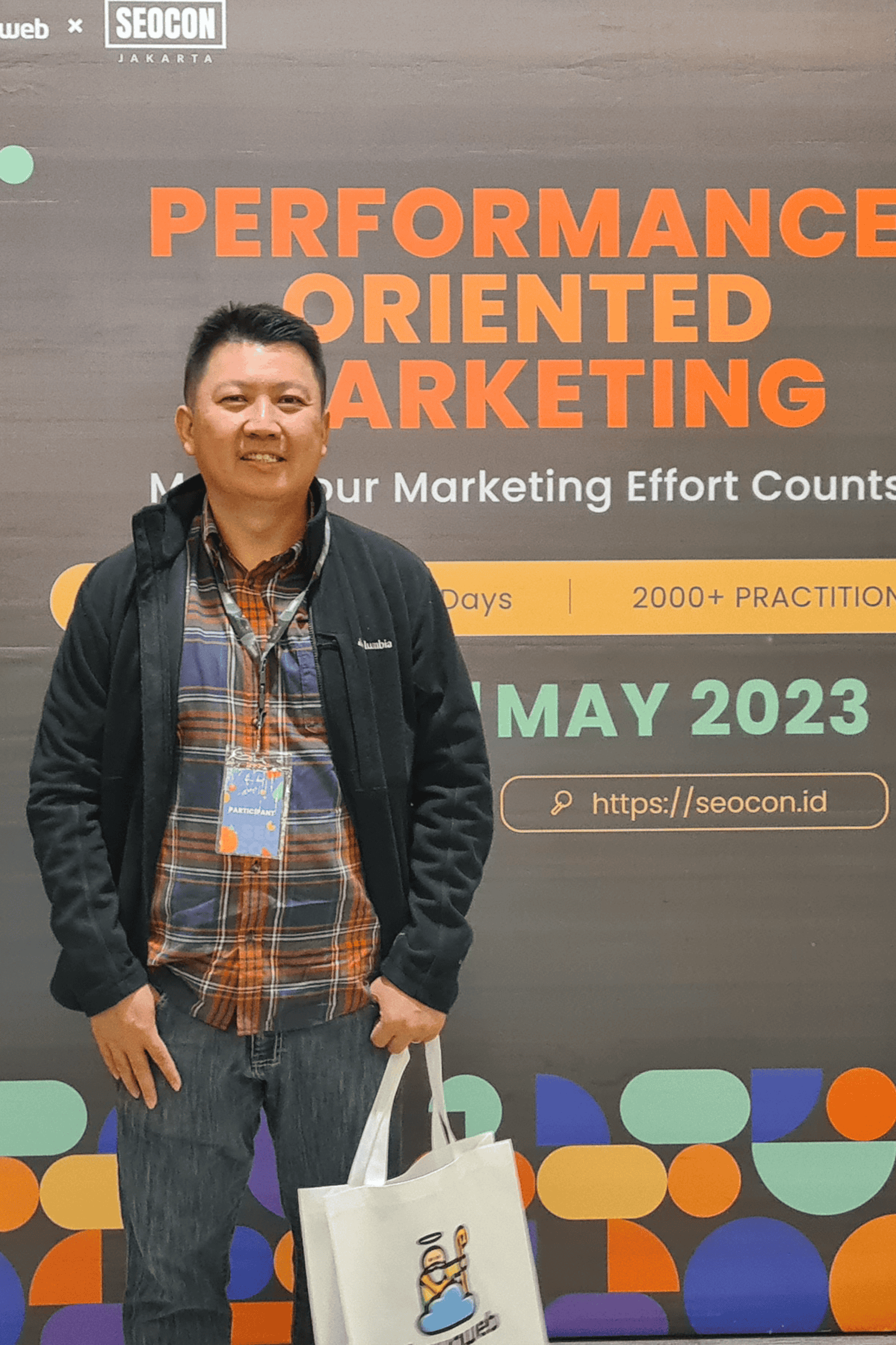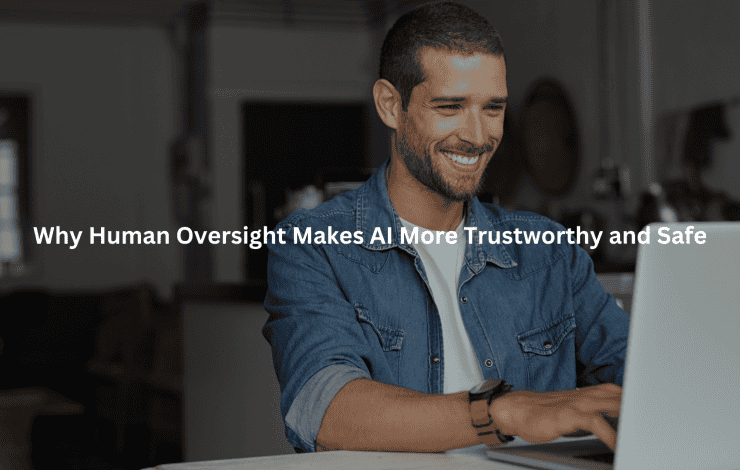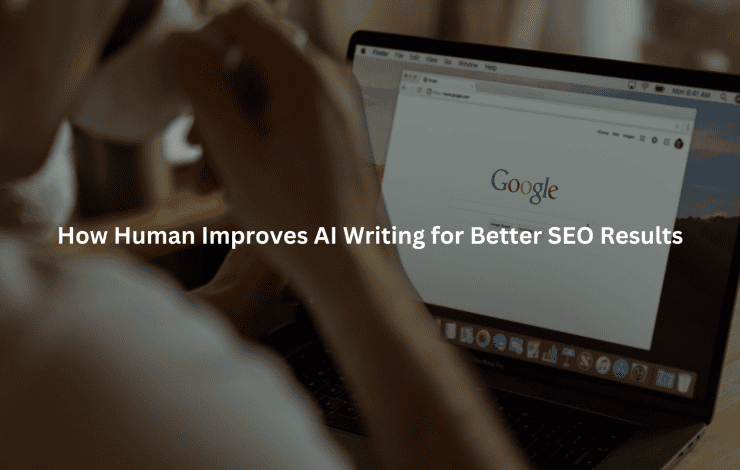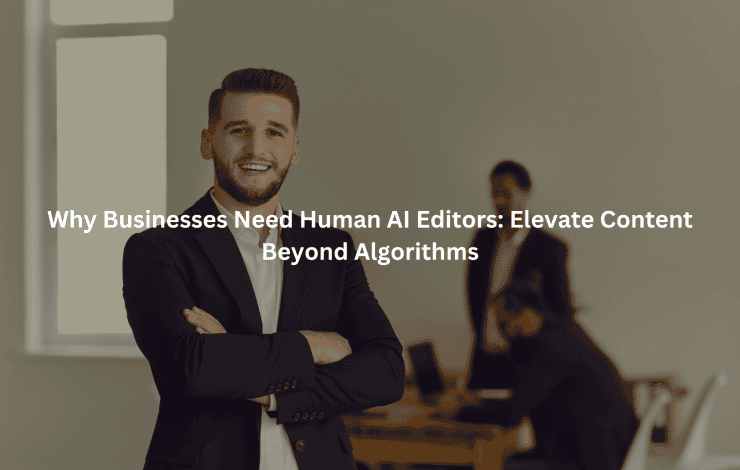AI can put words on a page, but it can’t get everything right. That’s where a human AI editor steps in, checking facts, fixing mistakes, and making sure the writing actually sounds like the brand. Machines miss the little things, context, subtlety, the kind of detail that makes a piece feel real. Human editors catch those gaps.
They smooth out awkward lines, add a bit of spark, and make sure the story holds together. It’s not just about grammar or spelling. It’s about making sure the writing connects, and that takes a person who knows what works and what doesn’t.
Key Takeaway
- Accuracy and Trust: Human editors check facts, fix mistakes, and make sure what’s written is real.
- Nuance and Voice: They tweak the tone and style so the writing fits the brand and actually keeps people interested.
- SEO and Quality: They use smart keywords and keep the writing sharp, so the content gets noticed and actually works.
Human AI Editor: Core Functions
Staring at 1,200 words of AI-written draft, it’s hard not to notice, every line technically checks out, but none of it sounds like a person with a pulse wrote it. That’s just a regular day at Jet Digital Pro. Editing here isn’t just about catching typos or fixing grammar. It’s about searching for a heartbeat in lines spit out by a machine, shaping the words until they feel like someone actually meant them. [1]
Error Detection and Correction
Factual Accuracy and Hallucination Prevention
AI messes up facts. Sometimes it just makes stuff up, like inventing a patient who never existed or quoting a stat that’s nowhere in any real study. There was even a draft where AI claimed Berlin was the capital of France. (It’s called hallucination in tech circles, and it happens more than you’d think.)
So, the first thing we do is check every claim. We dig up sources, scan databases, and double-check references. If the AI says, “according to a 2021 CDC report,” we go find that exact report. No guessing. If we can’t prove it, we either fix it or cut it.
Grammar, Spelling, and Consistency Checks
AI stumbles over language rules. It’ll mix up tenses, drop in British spellings, or forget how it started a sentence. We catch these slip-ups by reading out loud, awkward lines stick out fast. There’s always a style guide nearby, and if a client has their own rules, we follow those. We look for consistency, especially with technical stuff. If the AI flips between “search engine optimization” and “SEO,” we pick one and stick with it. Consistency matters, it builds trust.
Enhancing Clarity and Structure
Improving Readability and Logical Flow
AI content can feel like a pile of facts with no real thread. Transitions go missing, points repeat, and sometimes a new topic just drops in from nowhere. We outline before editing. Sometimes whole paragraphs get moved, sometimes we cut hundreds of words that just don’t fit.
We watch sentence length, mixing short ones with longer, more complex ones. No one wants to read a robot. If something’s tricky, we break it into steps or use bullet points. We check Flesch-Kincaid scores, aiming for a 10th-grade level, not a grad seminar.
Formatting for Professional Presentation
Formatting isn’t just for looks. People scan before they read. We use subheads, lists, and bold important terms, especially for SEO. So you’ll see things like “content quality assurance” or “semantic relevance” in bold. We add white space, make sure headings are nested right, and double-check that everything looks clean on desktop and mobile. There’s always a last sweep just for how it looks, because presentation counts.
Maintaining Authenticity and Brand Voice
Tone and Style Consistency
AI mimics tone, but it doesn’t always get it right. We’ve had AI drafts that sound like technical manuals when the brief called for conversational language. We adjust. If a client’s brand voice is playful, we add contractions and rhetorical questions.
For a formal brand, we keep it straightforward. We follow brand guidelines, or if they’re missing, we create a style snapshot after reading the client’s website. That way, every article sounds like it came from the same team.
Audience and Brand Alignment
Brands speak to specific audiences. AI doesn’t always know the difference between a blog for teenage gamers and an insurance industry newsletter. We tailor the content. For example, we recently reworked an AI-generated article about health insurance, stripping out jargon and adding real-life examples.
We use the right metaphors and references for the audience. When we say “human touch in AI editing,” this is what we mean, making content feel like it was made for the reader, not for a search engine.
Contextual and Semantic Relevance
Content Personalization and Targeting
No two pieces of content serve the same purpose. Some are for SEO, others for thought leadership, some for product pages. We clarify the goal up front. If we’re editing for a digital agency, we ask who the end reader is, what action we want them to take, and what questions they might ask.
That’s how we ensure semantic relevance. We adjust sentence structure, word choice, even the order of information, so the content answers the right questions for the right people.
Context Understanding and Adjustment
AI sometimes misses context. It will reference outdated statistics or use examples that don’t fit the client’s market. We double-check every detail against what’s current and relevant. If an AI tool references TikTok marketing strategies for a B2B SaaS audience, we swap it for LinkedIn strategies. Context is everything. The better we get at this, the more AI-generated content feels like it was written by someone in the know.
Human vs. AI Editing: Direct Comparison
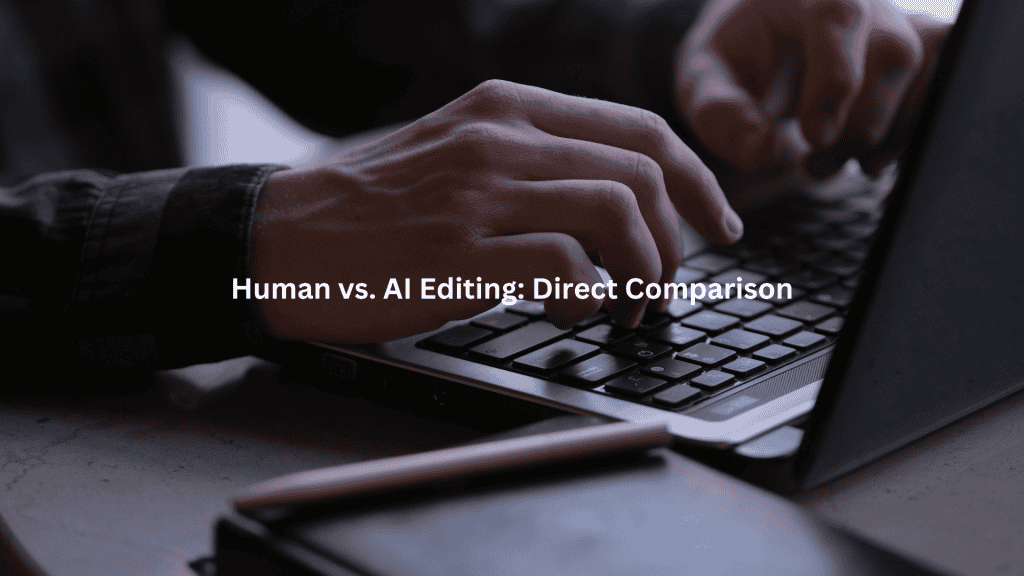
We remember working on a project where the AI draft was 1,500 words. It looked fine, but our client said it didn’t “feel right.” That’s the difference between what AI does and what we do. [2]
Editing Capabilities Overview
Automated vs. Context-Aware Corrections
AI spots obvious grammar issues but misses nuance. We correct errors with context in mind. For instance, AI might flag “affect” versus “effect” but not realize the sentence makes no sense in context. We ask, “Does this actually mean what it says?” and fix it if not.
Creativity and Originality Injection
AI repeats phrases and uses predictable structures. We add metaphors, analogies, and unique insights. Originality in content is what keeps readers coming back. We’ll rewrite bland intros, add personal anecdotes, or ask experts for a quote. This is where a human editor really makes the difference.
Fact-Checking and Verification
Source Evaluation and Claim Validation
We don’t trust anything without a source. If the AI says, “Studies show,” we check which studies. We use Google Scholar, official reports, and direct interviews when needed. If we can’t verify a claim, we change it. Clients rely on us for content verification, and we take that seriously.
Misinformation and Bias Detection
AI picks up bias from its training data. We check for loaded language, stereotypes, and one-sided arguments. For example, in financial content, we look for claims that could mislead investors. We’re careful about health advice. We flag anything that could be misinterpreted or cause harm. We want our content to be both accurate and fair.
SEO and Optimization
Strategic Keyword Placement
AI can stuff keywords, but it doesn’t always do it naturally. We place keywords where they fit, not where they’re forced. We use secondary keywords and related phrases for semantic optimization. We pay attention to keyword density, aiming for 1 to 2 percent. We use tools to check search engine optimization, but we always trust our ear first.
Search Engine Performance Monitoring
We watch rankings after publishing. If a piece doesn’t perform, we go back and tweak meta descriptions, headings, and keyword usage. We check Google Search Console for impressions, clicks, and average position. We track performance over time. For agency partners at Jet Digital Pro, we provide reports and suggest further improvements.
Emotional and Cultural Nuance
Humor, Empathy, and Subtlety
AI can’t tell a joke. It can’t comfort a frustrated reader. We add humor where it fits, offer empathy when discussing tough topics, and use subtle word choices to convey mood. For example, a line like “Nobody likes getting a surprise bill” connects more than “Consumers may be surprised by charges.”
Cultural Reference Integration
We edit for local color. If we’re writing for a US audience, we avoid British idioms or references that won’t land. We use holidays, events, and trends that matter to the target readers. This is especially important for global brands who want to sound local.
Editorial Workflow and Quality Assurance
Our workflow at Jet Digital Pro has been refined over hundreds of projects. We’ve found that the best results come from mixing human and AI strengths.
AI Content Review Process
Draft Generation and Human Oversight
AI gives us a solid draft, fast. But drafts aren’t finished work. We read through, mark up changes, and flag anything that needs a human check. Sometimes we’ll reject a paragraph altogether and start fresh. We trust our judgment over the machine’s.
Revision, Feedback, and Approval Loops
We use Google Docs so clients can comment directly. We go through multiple rounds of revision. For every piece, we do a final read-through before publishing. Our process includes peer review, another set of eyes always helps. Feedback from clients is logged, and we update our checklists to avoid repeating mistakes.
Editorial Standards and Best Practices
Consistency with Brand Guidelines
We keep a living document for every client, brand voice, preferred terminology, formatting rules. We update it when we get feedback. Consistency is more than just style, it’s about building trust with readers.
Editorial Checklist Implementation
Every editor uses a checklist. Ours includes grammar, fact-checking, SEO, formatting, and brand voice. We run through it before we call anything done. It’s not glamorous, but it works.
Collaborative Editing and Tools
Human-AI Collaboration Models
We use AI for speed, humans for quality. Our editors know when to let the machine work and when to step in. We use prompts and parameters to get better drafts from the AI. This cuts editing time by about 30 percent, but we never skip the human review.
Recommended Editing Tools and Plugins
We use Grammarly, Hemingway Editor, and Copyscape. For SEO, we use Clearscope and Surfer. For fact-checking, Google Scholar and industry databases. We’re always testing new tools. The best editors know the strengths and limits of each one.
Performance and Impact Measurement
Quality Metrics and KPIs
Are You a Digital Agency?
White Label SEO Content Services for Agencies
Scalable, customizable, and results-driven content solutions for your clients.
We measure readability scores, keyword rankings, engagement metrics (like time on page), and client feedback. If we see bounce rates go up, we check the intro and structure. If rankings drop, we review keyword usage.
User Experience and Engagement Tracking
We look at comments, shares, and session length. If readers finish articles and share them, we know we’ve done our job. We ask clients for feedback and check analytics monthly.
Addressing Modern Content Challenges
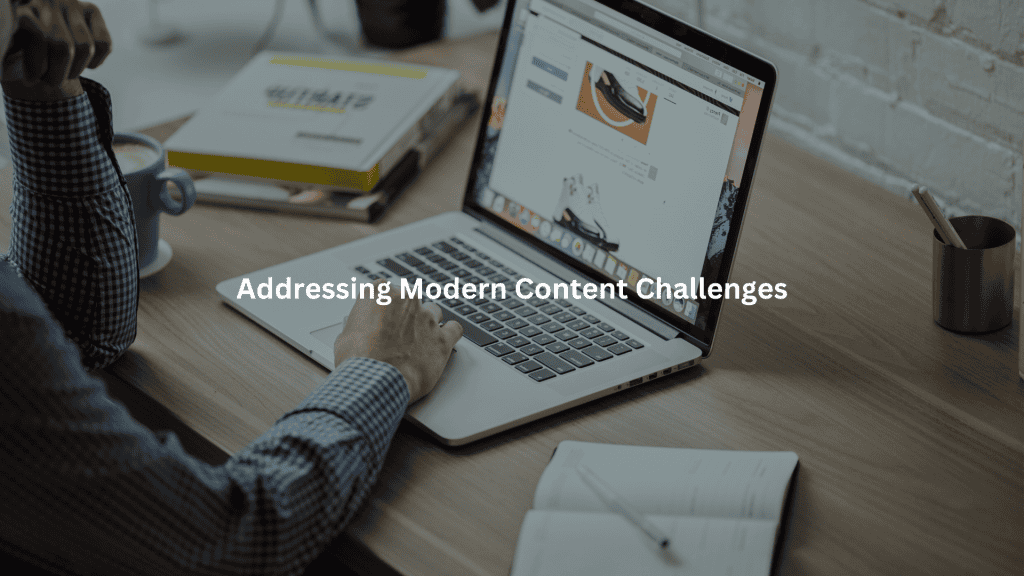
Every month brings a new challenge. AI writing tools get smarter, but so do the risks.
Ethical Editing and Bias Prevention
Ethical Dilemmas in AI Content
We face ethical questions. Should we keep content that’s technically correct but misleading? Should we publish health tips that aren’t backed by science? We say no. Our rule: If we wouldn’t put our name on it, we don’t let it go live.
Bias Detection and Mitigation Strategies
We run bias checks on every article. We look for stereotypes, gendered language, and political slants. If we see bias, we fix it. We’ve built a checklist for this, and we update it as new issues come up.
Safeguarding Content Authenticity
Plagiarism Detection and Prevention
AI sometimes copies phrases or sentences from its training data. We run every draft through Copyscape. If anything’s too close to the source, we rewrite it. We believe in originality in content. For us, content authenticity means more than “not plagiarized.” It means every article feels fresh.
Content Originality Enhancement
We ask for personal stories and case studies from clients. We add unique perspectives and data points. We write new intros and conclusions. AI can’t do that. Readers know the difference.
Nuance and Personalization in Content
Adapting to Audience Needs
We rewrite for different audiences. A SaaS blog post for CTOs reads differently from one for small business owners. We adjust vocabulary, structure, and references. We ask, “Does this answer the reader’s real question?”
Refining for Contextual Appropriateness
We double-check every example, statistic, and call-to-action. We make sure they fit the reader’s context. If something feels off, we change it. Context is king.
Future Trends and Skill Development
Evolving Role of Human AI Editors
AI is getting better. But so are we. Our job is less about fixing typos and more about supervising AI, shaping narratives, and protecting brand voice. We spend more time training the AI, building custom prompts, and less time re-writing every sentence. This means learning new skills, fast.
Training and Upskilling for Editorial Excellence
Need a Strategic SEO Content Partner?
Let’s craft SEO content that ranks, converts, and grows your brand.
Talk to UsWe invest in ongoing training. Our editors take courses in SEO, machine learning basics, and content strategy. We share tips on Slack, run peer workshops, and review each other’s work. We don’t stand still.
FAQ
How does a human AI editor manage tone and brand voice when reviewing ai-generated content?
Human AI editors read beyond just grammar correction. They look at tone adjustment to keep brand voice editing consistent across all digital content. AI writing tools often miss subtle tone shifts or use unnatural phrasing. Editors fix that by applying editorial standards, using their context understanding and audience targeting skills. This helps improve user experience and keeps the content aligned with content strategy and brand identity.
Why is the human review process still needed in ai content workflow and editorial workflow?
AI-assisted publishing speeds up the editorial workflow, but human in the loop editing is still crucial. Human AI editors catch errors from automated editing tools, like ai hallucinations, factual mistakes, or poor semantic relevance. Their job includes content verification, fact-checking ai content, and content accuracy checks to avoid spreading misinformation. It’s not just about speed, it’s about quality control and content authenticity.
In what ways do human AI editors handle nuance in writing that AI copywriting often gets wrong?
AI-generated content may sound polished, but it often lacks nuance in writing, especially when it comes to cultural sensitivity, ethical content editing, or creative content editing. Human AI editors refine these pieces through editorial oversight. They improve readability enhancement, fix bias detection issues, and apply style consistency rules. That kind of nuance supports search engine optimization and content personalization goals.
How do human AI editors support content quality assurance and readability enhancement in collaborative editing settings?
In collaborative editing teams, human AI editors focus on content refinement and content quality assurance. They correct tone inconsistencies, run plagiarism detection checks, and ensure clarity through readability enhancement. Unlike machine learning editing systems, human editors adjust the writing based on the editorial best practices tied to real user behavior and SEO content editing requirements. That balance boosts content optimization without losing originality in content.
What’s the role of human touch in ai content supervision and digital content editing for large-scale publishing?
AI content supervision at scale can’t run on auto-pilot. Human AI editors provide content curation, enforce editorial standards, and guide the ai content review process. Their role includes editing for context understanding, overseeing content moderation, and stopping misinformation before it spreads. Through brand voice editing and content personalization, they improve content authenticity while ensuring each piece fits into a wider ai content workflow and publishing strategy.
Conclusion
AI drafts content fast, but it takes a trained human to make it real. At Jet Digital Pro, every piece we touch goes through our 11-step editing process, fact-checked, smoothed out, and tailored to sound human. We fix what AI misses. We ask what readers need. Then we shape it to work for your clients. If your agency wants SEO content that performs and passes scrutiny, let’s talk.
References
- https://medium.com/@kannanranikannanrani1/insights-from-an-ai-editor-i-edit-ai-for-a-living-85661e152f4b
- https://m-tiesler.medium.com/a-direct-comparison-blog-article-written-by-human-vs-machine-ai-409935b0fce6
Related Articles
- https://jetdigitalpro.com/human-expertise-for-ai-content/
- https://jetdigitalpro.com/quality-control-by-human-ai-editor/
- https://jetdigitalpro.com/role-and-value-of-human-ai-content-editors/
P.S – Whenever you’re ready,
we’re here to help elevate your SEO content.
Partner with us for strategic, scalable content that drives real organic growth.
Contact Us Now

